
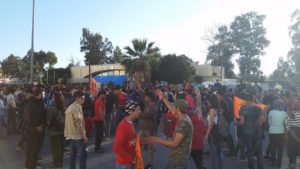
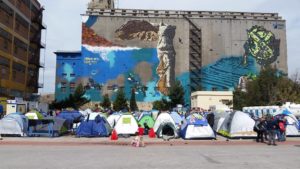


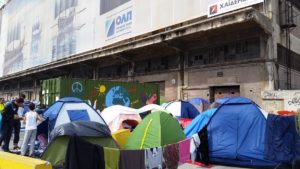
These are some photos I captured when I volunteered at a refugee camp in Piraeus, Greece in 2016.






These are some photos I captured when I volunteered at a refugee camp in Piraeus, Greece in 2016.
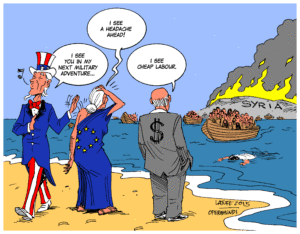 This comic shows the different ways refugees are viewed when entering the U.S.
This comic shows the different ways refugees are viewed when entering the U.S.
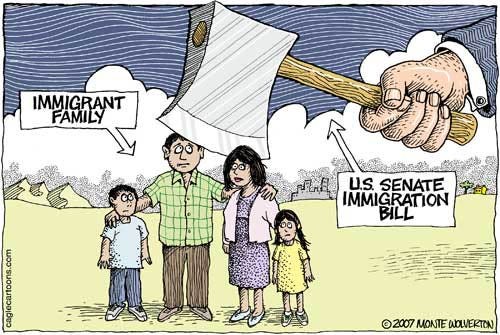
This is representation that the U.S Senate Immigration Bill essentially separates or breaks apart immigrant/refugee families.
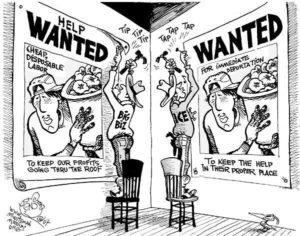 This image depicts the exploitation of immigrants and refugees in terms of extorting them for money and labor yet persecuting them simultaneously.
This image depicts the exploitation of immigrants and refugees in terms of extorting them for money and labor yet persecuting them simultaneously.
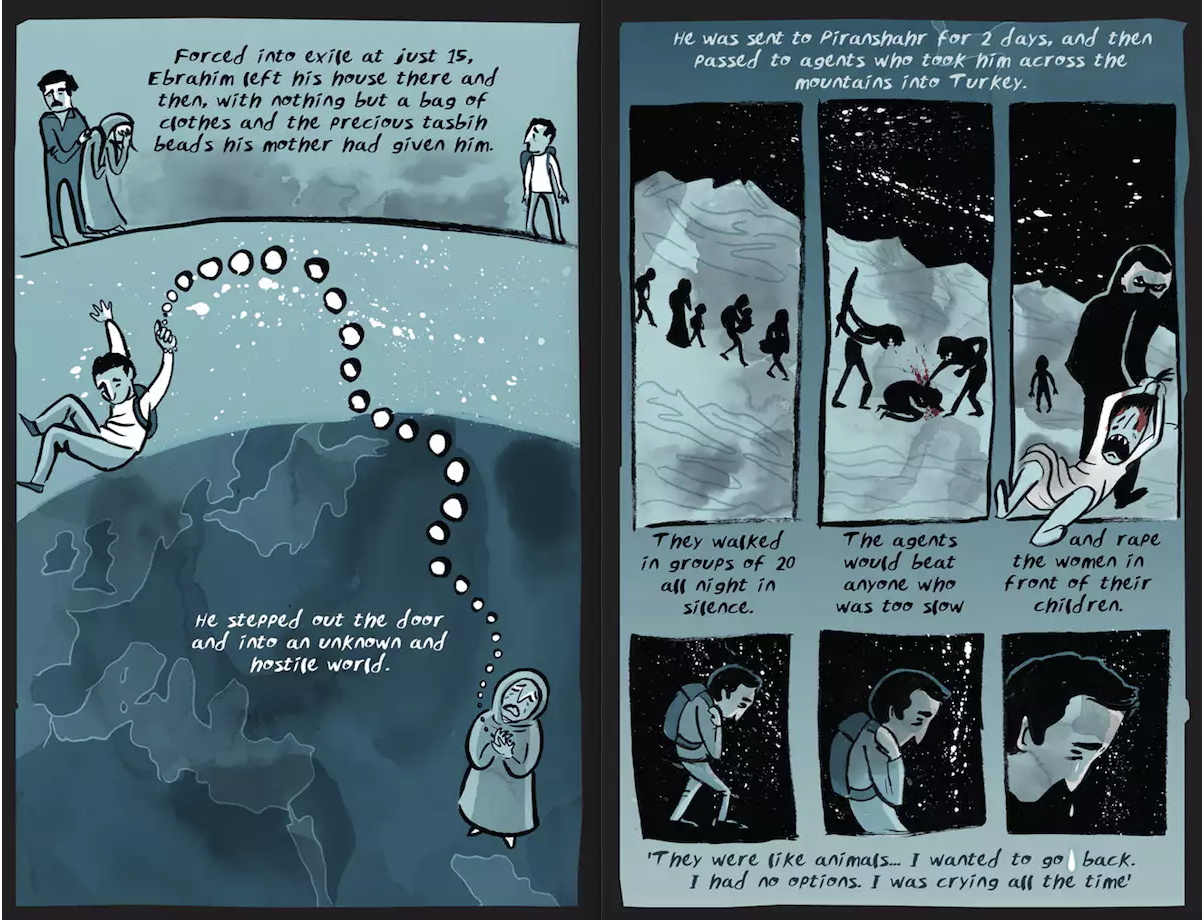
This is a comic I found giving a visual representation of what it is like to flee a country and the things one would see and experience.
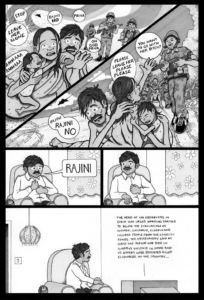
This comic sees him having a flashback of his experiences of the conflict of his escape from Sri Lanka.
My visual representation of refugee/asylum seekers is the film Hotel Rwanda. A basic plot summary of the film is that it’s about a hotel manager who houses thousands of Tutsi refugees.
This article analyses how Western societies have hostile attitudes and feelings of anger toward refugees and asylum seekers. Western societies also have a mistrust toward these refugees and it may have a negative impact on their general well-being. These fears Western have toward refugees and asylum seekers have had an effect on the laws immigration laws and policies. This peer review studies published work done between January 1, 2002, and December 31, 2015. Westerns have been know to have mistrust toward refugees and asylum seekers in the past and a lot of events have happened in the world cause these miscued feelings toward refugees and asylum seekers.
One of the biggest event that caused these feelings is the September 11 attacks on the world trade center, the pentagon and flight 93. This was a coordinated terrorist attacks by the Islamic terrorist group al-Qaeda. These attacks and the wars that followed caused a chain reaction of fear throughout Western society toward immigrants. Numerous authors have demonstrated how experiences of discrimination and racism are strongly related with growing feelings of anger, hostility, fear, and mistrust in victims. This is not just in America but in European countries, Canada and Australia.
The peer review gives three recommendation to that could help with these issues. (a)”Helping professionals should have greater involvement in advocacy matters, especially regarding the impact of government laws, policies, and practices related to RASI. (b) Governments and policymakers should be more cautious when passing immigration laws and policies, because these often have a much stronger effect on society’s negative views of RASI than may be anticipated. (c) More studies should be conducted to investigate the relationship between harsh immigration laws and societies’ negative attitudes and feelings toward RASI, and the possible impact of social media in inflaming those negative views and feelings.”
https://ezproxy.stevenson.edu:2065/eds/detail/detail?vid=10&sid=48767176-6343-450d-ae01-42fd27621d17%40sdc-v-sessmgr04&bdata=JnNpdGU9ZWRzLWxpdmUmc2NvcGU9c2l0ZQ%3d%3d#AN=2018-19498-001&db=pdh
The condition in Togo in regards to the economy and the government has improved only a little but still needs work. The current president of the country, who entered into office in 2005, has not really done much to better the country since his father passed the presidency to him. The state of the country doesn’t seem to be getting better at all and many times people seek refuge in the neighboring countries such as Ghana or Benin. This article “Refugee Politics: Self-Organized ‘Government’ and Protests in the Agamé Refugee Camp (205-13)” talks about the different forms of representation and participation set up by the Togolese refugees in the Agamé camp in Benin between 2005-2013. It also examines the protests about their statutory rights during this period. In this article, the people who moved to the refugee camp in Benin were unsatisfied because the strategies that were put in place by the United Nations High Commissioner for Refugees (UNHCR) and other organizations running the camps would set them up, withdraw form them, and then eventually dismantle them therefore leaving the refugees without any real help. The reason why the camp was created in the first place was to be cope with the influx of Togolese refugees into Benin after the election of the current president. It quickly became an issue because the refugees wanted representative structures that would allow them to interact with the UNHCR and the Benin administration but unfortunately it did not work. Eventually in 2013, Benin authorities evacuated the camp in order to end the continued existence of Togolese in a camp where the organization who set it up had left several years before.
The author examines what level of responsibility there is between the federal government and the state government in creating policies around immigrants. Federal government ultimately has the largest responsibility in creating and enforcing the regulations around immigration, but the author examines how more recently states have been taking a larger role. The article begins by looking at the number of state legislation and resolutions that took place between 2005 and 2014. Arizona has stated a movement of legislation being created with what became known as the Omnibus Legislation because it lumped several bills into one. Within the next year, five other states passed similar legislation.
The journal then takes a wide look at all each state and the legislation they have enacted. This information is displayed in a large chart. The author then examines the different type of legislation more closely. It looks at law enforcement and the structure in which they exist and interact with immigrants. It touches on an E Verification for employment and how different states have different levels of requirements. It even continues into areas to determine how eligible immigrants are for In-State tuition and other financial aid resources, drivers licenses, and health care. Each area that is examined is accompanied by a diagram of the United States and to what degree the legislation exists.
The entire article is written about the laws and what limits are put onto immigrants and the way they are living. The journal was published in 2016 with much of its information coming from 2013-2015, being that it is currently 2019, I am unsure how much legislation has changed since the publication of this journal.
“Landscape of State-Level Immigration Policies.” A Cost-Benefit Framework for Analyzing the Economic and Fiscal Impacts of State-Level Immigration Policies, by Lynn A. Karoly and Francisco Perez-Arce, RAND Corporation, 2016, pp. 3–20. JSTOR, www.jstor.org/stable/10.7249/j.ctt1btc0p8.10.